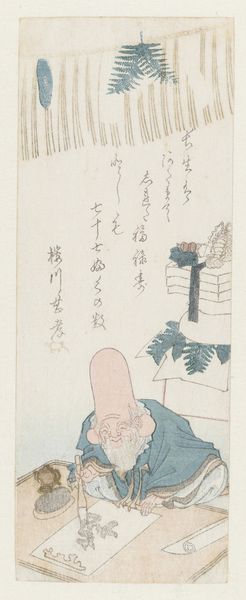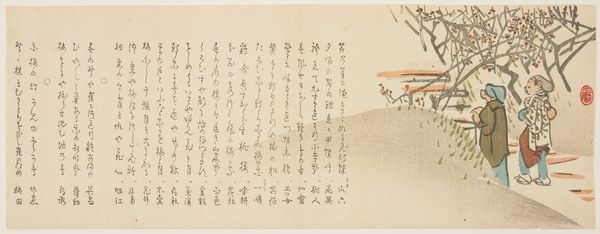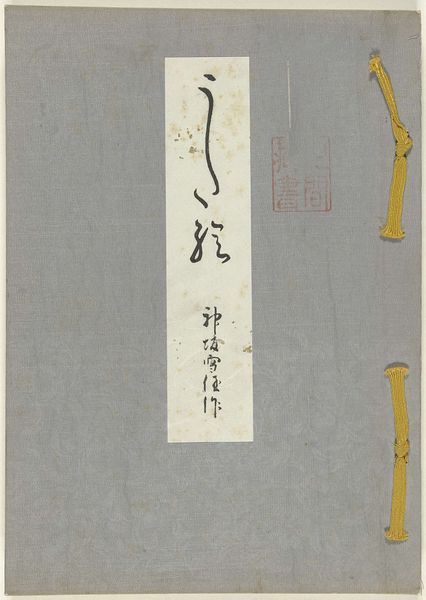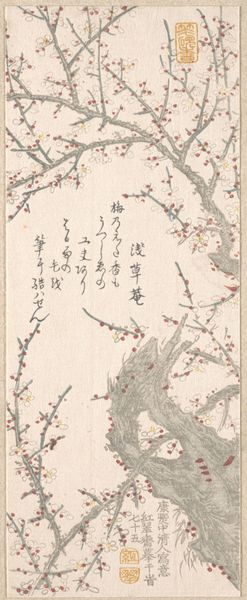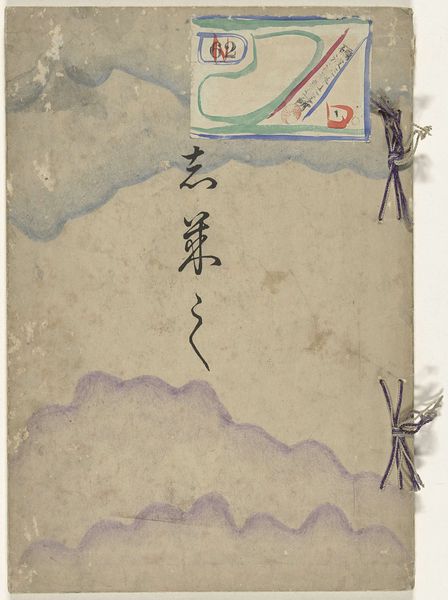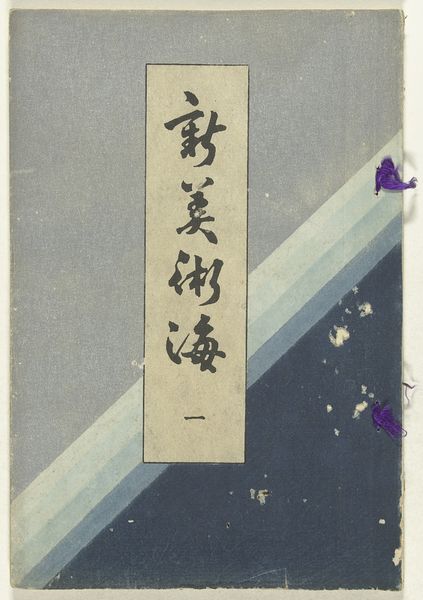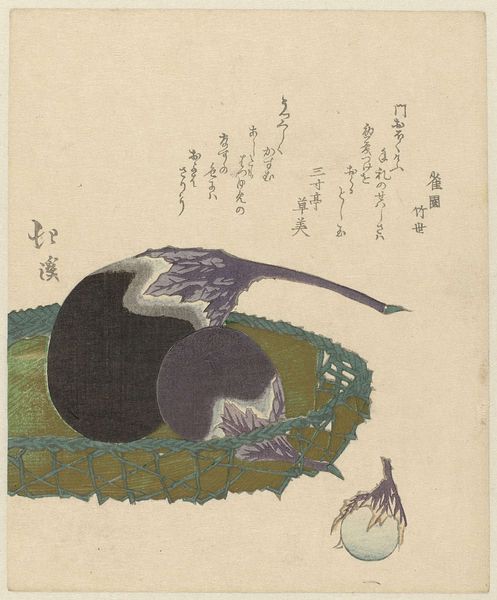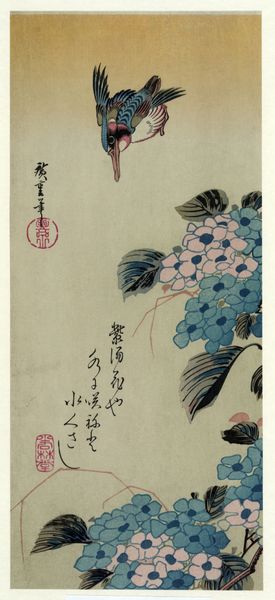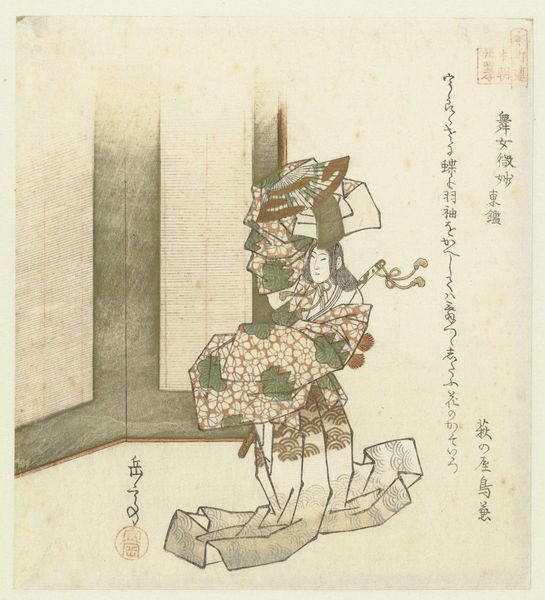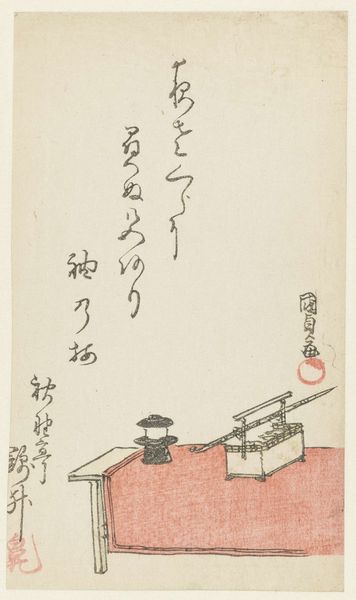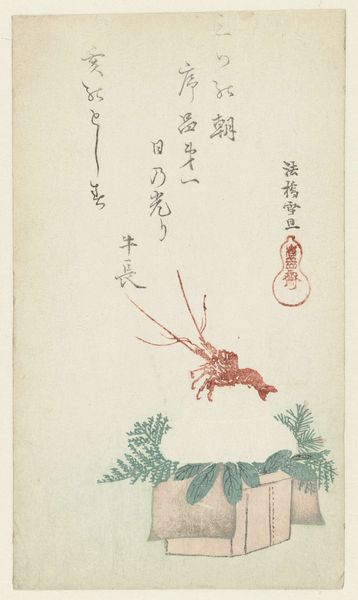
print, watercolor
#
water colours
# print
#
asian-art
#
landscape
#
ukiyo-e
#
watercolor
#
watercolour illustration
#
watercolor
Dimensions: height 208 mm, width 96 mm
Copyright: Rijks Museum: Open Domain
Curator: Here we have a fascinating ukiyo-e print entitled "New Year's Arrangement with a Tiger," created in 1806 by an anonymous artist. It appears to be a watercolor print. Editor: My first thought? An odd stillness. There's a peculiar composition—a sliding door ajar, calligraphy on a screen, a dangling…ornament, and a hunched-over feline. It’s very muted in tone; primarily pale pinks, creams, and grey. Curator: Precisely. This aesthetic draws heavily from established symbolism of the New Year. Consider the tiger. It represents not only strength, but also the dispelling of bad luck for the incoming year, particularly apt as it would usher in a Tiger year according to the Chinese zodiac. This image is less about depiction and more about invocation. Editor: It makes me consider the printmaking process of the era. The paper itself – likely meticulously crafted. The precision of the lines in the calligraphy suggests highly skilled artisans involved in every stage, not just the named artist whose hand probably began and ended the physical act of creation. Curator: Absolutely. The hanging decoration and tiger placement suggest deeper cultural associations. Pine branches signify longevity, resilience. It may have acted as talisman, something accessible for broad distribution given it is a woodblock print. How widely were these available? How quickly could print runs happen to satiate demand? Editor: Well, woodblock printing allowed for relatively efficient mass production. And Ukiyo-e like this catered to a growing merchant class eager for affordable art. Think of the dissemination—prints changing hands, carried to different regions, becoming part of domestic interiors beyond just elite circles. These weren’t precious singletons, and their relatively common nature probably imbued their own cultural significance on its mass audiences of their day. Curator: I'd agree, however, also note how these prints reflect shared anxieties and hopes connected to specific celebrations or eras—making visible cultural memory. Look at that rather forlorn, sedentary posture of the tiger! The animal here suggests an ambiguous emotional register beyond just overt celebration or wishes for good luck. There's, frankly, a touch of sadness. Editor: Perhaps! It really reveals how the economics of image production deeply intertwined with visual language. The prints created desire, sustained tradition and provided a canvas of self expression on which Japanese society could be interpreted and consumed widely, not merely to the literati but rather all social groups who are given a stake of self reflection. Curator: A wonderfully pragmatic, if unsentimental, perspective! I still contend this artwork provides a complex reading of societal fears alongside wishes of renewal that continue even to this day. Editor: And for me it is the means of artistic expression that amplifies how deeply rooted materiality and craftsmanship truly are. The convergence creates new traditions of understanding this art object which transcends its singular creation.
Comments
No comments
Be the first to comment and join the conversation on the ultimate creative platform.
